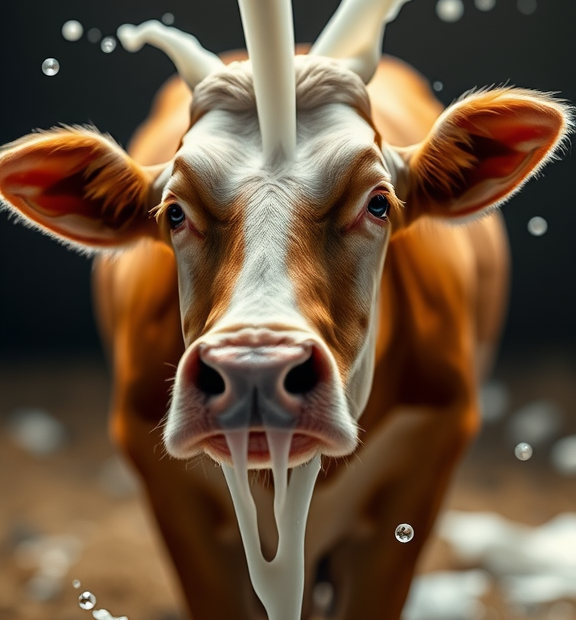The Impact of Microplastics in Fairlife Milk: Understanding the Concerns
Fairlife milk has gained popularity for its high protein content and lactose-free options. However, recent discussions have focused on concerns over microplastics that may contaminate this popular dairy product. Microplastics are tiny plastic particles that can enter our food supply through various means, including the packaging and processing of foods. Understanding the potential impact of these microplastics in Fairlife milk is crucial for consumers who prioritize health and wellness.
Microplastics are defined as plastic particles less than 5mm in size. They can originate from larger plastic debris that breaks down or from synthetic fibers used in clothing and packaging materials. Their pervasive presence in the environment raises alarms about how they may end up in our diets, including dairy products like Fairlife milk.
One of the primary ways microplastics enter food products is through packaging. Many milk brands, including Fairlife, use plastic containers or cartons that may leach tiny plastic particles into the liquid. If the milk is stored for long periods or exposed to heat, the risk of microplastics entering the milk increases. This raises concerns among health-conscious consumers about the quality of the milk they consume.
Research indicates that microplastics can have harmful effects on health. While the exact implications are still being studied, the ingestion of microplastics is problematic for several reasons:
- Potential Toxicity: Microplastics can carry harmful chemicals that may leach into the food they contaminate. These chemicals can interfere with hormonal systems and pose risks to human health.
- Inflammation: Some studies suggest that microplastics may cause inflammation in the digestive system, leading to various health issues, especially in sensitive individuals.
- Bioaccumulation: Microplastics have the potential to accumulate in the body over time, raising concerns about long-term exposure and its relationship with chronic diseases.
Consumers of Fairlife milk may wonder how prevalent microplastics are in their favorite dairy drink. While studies are still emerging, initial research suggests that microplastics can indeed be found in various food and beverage products, including dairy. However, the specific levels of microplastics present in Fairlife milk are not yet well-documented.
It’s vital to stay informed about the sources of microplastics and how they relate to food products. Here are some tips to minimize exposure:
- Choose Glass or Carton Packaging: When possible, opt for dairy products that use glass or carton packaging instead of plastic containers, as these may reduce the risk of microplastic contamination.
- Avoid Heating Plastics: Refrain from microwaving milk or other liquids in plastic containers, as heat can increase the likelihood of microplastics leaching into the food.
- Stay Educated: Keep an eye on research about microplastics and their impact on food safety. Advocating for better industry standards can help ensure safer products.
Aside from packaging, the processing of milk can contribute to microplastic contamination. The machinery used to process dairy products may also shed tiny plastic particles, particularly if they involve wear and tear. This is another area where consumers should pay close attention, although the responsibility primarily lies with manufacturers to ensure rigorous quality control measures.
Love what I do? Be a hero and help me keep creating awesome content!
Support My Mission Now!Every donation fuels more great stuff – thank you, legend!
While Fairlife milk is marketed for its nutritional benefits, the growing concern about microplastics highlights the need for greater transparency in food production. As consumers raise awareness about microplastics and demand higher safety standards, companies may feel the pressure to investigate and mitigate these potential hazards more seriously.
Understanding the impact of microplastics in Fairlife milk requires ongoing awareness. While enjoying the benefits of this nutritious milk, it’s essential to stay informed about environmental pollutants and make educated purchasing decisions. By remaining conscious of the potential risks associated with microplastics, you can take proactive steps toward a healthier lifestyle.
Love what I do? Be a hero and help me keep creating awesome content!
Support My Mission Now!Every donation fuels more great stuff – thank you, legend!
The journey to ensure food safety continues, and as more studies emerge, the conversation around microplastics in milk and other food products will likely evolve. Keep informed, engage with brands, and advocate for cleaner food solutions. Your health could depend on it.
Ways to Reduce Microplastic Exposure in Dairy Products
In recent years, awareness about microplastics has increased significantly, especially concerning their presence in food products. Dairy, particularly products like milk, yogurt, and cheese, has not been exempt from this issue. While it may seem challenging, there are several effective ways to reduce microplastic exposure in dairy products, ensuring a safer and healthier diet for you and your family.
Understanding Microplastics in Dairy
Microplastics are tiny plastic particles, less than 5mm in size, which can originate from various sources, including packaging, processing facilities, and environmental contamination. Dairy products can become contaminated through contact with plastic packaging or equipment during production. Awareness of this issue can help you take proactive measures when selecting dairy products.
Choosing Packaging Wisely
Love what I do? Be a hero and help me keep creating awesome content!
Support My Mission Now!Every donation fuels more great stuff – thank you, legend!
One of the primary sources of microplastics in dairy products comes from their packaging. Here are some tips to make better choices:
- Opt for Glass or Carton: Whenever possible, choose dairy products packaged in glass or cardboard rather than plastic. These materials are less likely to leach microplastics into the food.
- Avoid Single-Use Plastics: Avoid buying single-use plastic containers, like those often used for yogurt. Look for larger containers or those with minimal plastic packaging.
- Check for BPA-Free Labels: If you must use plastic packaging, look for products labeled as BPA-free. While this won’t eliminate microplastics, it can help reduce exposure to harmful chemicals often found in plastic.
Supporting Local Dairy Farms
Buying from local dairy farms can significantly reduce your exposure to microplastics. Here’s how:
- Freshness Matters: Local farms often sell their products directly to consumers, reducing the need for extensive packaging and transportation that can contribute to microplastic contamination.
- Transparency in Production: Local farmers are more likely to provide insight into their production methods, allowing you to choose those using environmentally friendly practices.
- Community Engagement: Supporting local businesses fosters a stronger community and encourages sustainable farming practices, ultimately benefiting your health and the environment.
Increasing Awareness and Education
Love what I do? Be a hero and help me keep creating awesome content!
Support My Mission Now!Every donation fuels more great stuff – thank you, legend!
Staying informed about the issue of microplastics can help you make better choices:
- Research Brands: Look into dairy brands that actively work to reduce plastic use and contamination. Many companies are now taking initiatives to minimize microplastic exposure in their products.
- Follow Relevant News: Keep an eye on news sources and scientific research related to microplastics in food. Awareness can lead to smarter purchasing decisions.
- Engage in Discussions: Talk about microplastics with friends and family. The more people know, the more pressure companies feel to change their practices.
Home Practices for Reducing Microplastics
In addition to buying wisely, there are practices you can adopt at home to further minimize microplastic exposure:
- Use Glass and Stainless Steel: When storing dairy products, consider transferring them into glass or stainless steel containers. This can help prevent additional microplastic contamination from plastic containers.
- Avoid Microwaving Plastic: Never heat dairy products in plastic containers in the microwave. The heat can cause plastics to break down, releasing microplastics into your food.
- Regular Maintenance of Equipment: If you use equipment like blenders, make sure they’re made of quality materials, and replace any plastic items that may wear down over time.
Investing in Quality Products
When shopping for dairy products, focus on quality over quantity. Here’s why:
- Organic Choices: Organic dairy products typically undergo stringent regulations, which can mean reduced exposure to plastics and other harmful substances.
- Trustworthy Resources: Purchase from brands that prioritize environmental and health safety. This often translates to higher quality dairy, less plastic, and overall better practices.
- Land to Table Movement: Be part of the movement advocating for sustainable farming and dairy practices. Support brands and farmers who promote clean, healthy food systems.
By making informed choices, supporting local producers, and being conscious of your home practices, you can significantly lessen your exposure to microplastics in dairy products. Every small step you take contributes to better health and a cleaner environment.
Conclusion
As concerns surrounding microplastics in Fairlife milk and other dairy products become more prominent, it’s essential to keep informed about the potential impacts on health and the environment. Microplastics can enter the food supply chain through various channels, including animal feed and packaging. By understanding these pathways, consumers can make smarter choices regarding the dairy products they purchase.
To minimize microplastic exposure in your diet, consider opting for brands that prioritize sustainable practices and transparent sourcing. Look for dairy products packaged in glass or eco-friendly materials, which can help reduce the potential for microplastic contamination. Washing fruits and vegetables thoroughly and being mindful about the utensils and containers you use can also decrease microplastic ingestion.
Remember that although the presence of microplastics in our food supply is concerning, proactive steps can be taken. Staying educated about the brands you support and advocating for better industry practices are ways to help address these issues. By prioritizing your health and the planet, you can make effective choices that contribute to a safer and cleaner food system. Empower yourself with information, and engage in discussions that can help push for essential changes in how our food is produced and packaged. Together, consumers can significantly influence the dairy industry and push it toward a more sustainable future.

